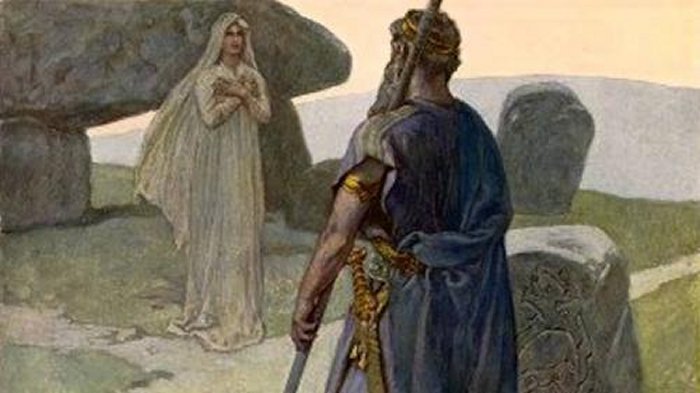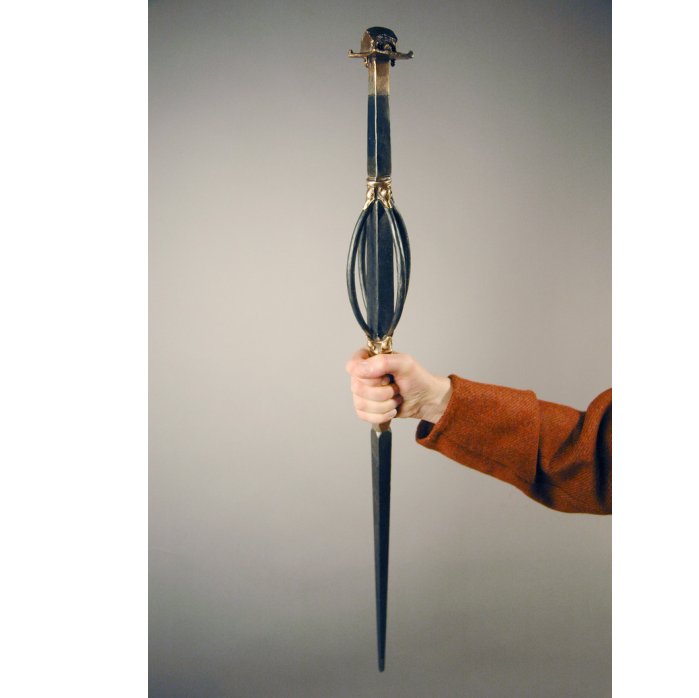Norse Shamanism: A Völva And Her Prophecies Were Feared Among Norse Gods And Vikings
Ellen Lloyd - AncientPages.com - The Völva was a mighty female shaman and seer in Norse mythology.
She held an important place in the ancient Viking society, and her powers were considered so strong that not only Vikings feared her prophecies.
But there were also other Norns, both benevolent and malevolent, who had enough power to reverse a person’s fortune.
Even Odin, the greatest of all Norse gods, consulted her to learn about his future and other divinities.
In Völuspa, Odin offered the völva his necklace and rings as payment for telling him the future. She foretold the creation of the world, the first gods, the first people, and Ragnarök – the end of the world.
What Is Norse Shamanism?
The Völva was considered a Seiðr (sometimes anglicized as seidhr, seidh, seidr, seithr, seith, or seid) is an Old Norse term for a type of sorcery that was practiced in Norse society during the Late Scandinavian Iron Age.
According to Norse mythology, the Norns were shapers of destiny and recorded days in a person's life. They were the foremost masters of seidr.
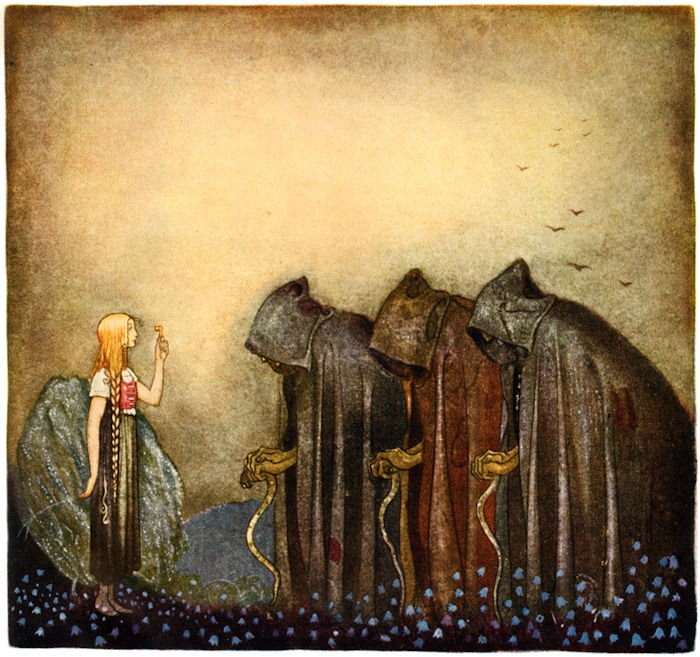 Guldnyckeln by John Bauer (1882–1918). Credit: Public Domain
Guldnyckeln by John Bauer (1882–1918). Credit: Public Domain
A Seiðr could not only foretell the future but also raise storms, journey or battle in animal form, send a nightmare to kill someone by suffocation in his sleep, and cast love spells.
But there were also other Norns, both benevolent and malevolent, who had enough power to reverse a person's fortune.
In his book Viking Way: Religion and War in Late Iron Age Scandinavia, archaeologist Neil Price writes:
"There were seiðr rituals for divination and clairvoyance; for seeking out the hidden, both in the secrets of the mind and in physical locations; for healing the sick; for bringing good luck; for controlling the weather; for calling game animals and fish.
Goddess Freya was the most powerful völva. James Doyle Penrose (1862-1932) - Credit: Public Domain
Importantly, it could also be used for the opposite of these things – to curse an individual or an enterprise; to blight the land and make it barren; to induce illness; to tell false futures and thus to set their recipients on a road to disaster; to injure, maim and kill, in domestic disputes and especially in battle."
The name Völva (vǫlva) is Old Norse and means "wand carrier" or "carrier of a magic staff." In Norse Sagas, a völva is often described as an older woman who appears late at night. She is dressed in a dark foot-length cloak and holds a magical staff in her hand.
In some Norse myths and sagas, it is written that the wand she held had the power of causing forgetfulness in anyone who tapped it three times on the cheek.
Freya: Norse Goddess Who Was The Most Prominent Völva
The art of prophecy was a divine gift that the Norse goddess Freya taught Odin and the Aesir, Norse gods associated with war, magic, and the sky.
In Norse mythology, Freya is a powerful goddess. She belongs to a group of Gods and Goddesses known as the Vanir, associated with nature, wild places and animals, and unseen realms.
Reconstruction of Klinta rod, a völva staff. Photo: Oskar Kullander / SHM
She is considered to be the goddess of Love and Beauty but is also a warrior goddess and one of great wisdom and magic. Freya, who always had a wand in her hand, was the most prominent völva.
A Völva Needed Her Magical Staff To Foretell The Future
The most detailed account of such a woman and her craft comes from The Saga of Erik the Red. In the saga, a Völva comes to a settlement in Greenland to prophesy for the community. The völva wandered from town to town and farm to farm, performing commissioned acts of magic in exchange for room, board, and other forms of compensation.
Archaeologists have discovered ancient artifacts that might be a wand carried by the Norse female shamans.
The most delicate ancient rod - found in a Viking woman's grave on Öland - is stored at the Historical Museum in Sweden.
Finds from a vǫlva's grave in Köpingsvik, Öland. There is an 82 cm long wand of iron with bronze details and a unique model of a house on the top. Image credit: Swedish History Museum in Stockholm.
. The rod is about one meter long and interrupted at one end. It is made of iron with bronze details. A house in miniature crowns a top. Perhaps it is a symbol of Freya's house, "Folkvang." In the tomb, other items showed that the dead woman had a special status. Maybe the deceased woman was a völva.
A völva needed the magical staff to foretell the future. While excavating some ancient graves in Scandinavia, scientists have also discovered traces of cannabis and other drugs most likely used during the rituals.
A völva was just as respected as much as her prophecies were feared. Like many other shamans in ancient cultures, the Norse völva was set apart from her wider society, both in a positive and a negative sense.
Updated on December 22, 2023
Written by Ellen Lloyd – AncientPages.com
Copyright © AncientPages.com All rights reserved. This material may not be published, broadcast, rewritten or redistributed in whole or part without the express written permission of AncientPages.com
More From Ancient Pages
-
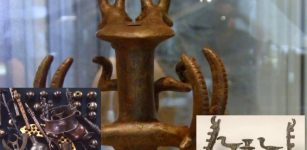 Nahal Mishmar Secrets: Priceless Artifacts In Cliff Cave Overlooking The Dead Sea
Artifacts | May 20, 2014
Nahal Mishmar Secrets: Priceless Artifacts In Cliff Cave Overlooking The Dead Sea
Artifacts | May 20, 2014 -
 Rare Iron- And Viking-Age Mortuary Houses Discovered In Norway
Archaeology | Aug 27, 2024
Rare Iron- And Viking-Age Mortuary Houses Discovered In Norway
Archaeology | Aug 27, 2024 -
 Rudra – Mighty Hindu God Of Death, Destruction, Hunting Who Heals Mortal Diseases
Featured Stories | Aug 10, 2021
Rudra – Mighty Hindu God Of Death, Destruction, Hunting Who Heals Mortal Diseases
Featured Stories | Aug 10, 2021 -
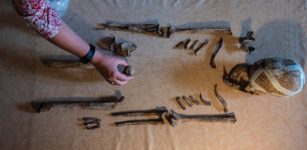 Who Was The The Mysterious Lady Of Bietikow And What Had She In Common With Ötzi Iceman?
Archaeology | Nov 6, 2020
Who Was The The Mysterious Lady Of Bietikow And What Had She In Common With Ötzi Iceman?
Archaeology | Nov 6, 2020 -
 Sam Bass Became Texas’s Beloved Bandit And Was Admired By The Poor
Featured Stories | Mar 23, 2021
Sam Bass Became Texas’s Beloved Bandit And Was Admired By The Poor
Featured Stories | Mar 23, 2021 -
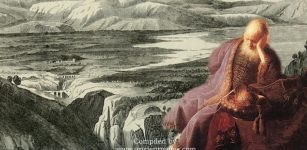 Tahpanhes – Biblical City Where Prophet Jeremiah And King Zedekiah’s Daughters Hid From The Babylonians
Biblical Mysteries | Jul 19, 2021
Tahpanhes – Biblical City Where Prophet Jeremiah And King Zedekiah’s Daughters Hid From The Babylonians
Biblical Mysteries | Jul 19, 2021 -
 What The Egg Crisis Reveals About Our Food System
Archaeology | Apr 24, 2023
What The Egg Crisis Reveals About Our Food System
Archaeology | Apr 24, 2023 -
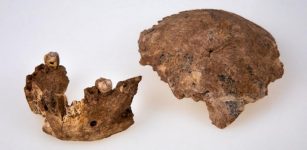 New Type Of Early Previously Unknown Human Discovered In Israel
Archaeology | Jun 29, 2021
New Type Of Early Previously Unknown Human Discovered In Israel
Archaeology | Jun 29, 2021 -
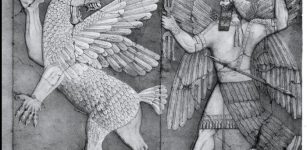 Evil God-Bird Anzu Who Stole The Tablet Of Destiny To Control Universe and Fates Of All
Featured Stories | Aug 8, 2016
Evil God-Bird Anzu Who Stole The Tablet Of Destiny To Control Universe and Fates Of All
Featured Stories | Aug 8, 2016 -
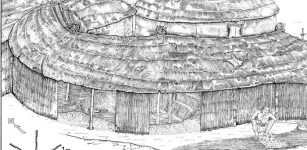 What Ancient Dung Reveals About Epipaleolithic Animal Tending
Archaeology | Sep 15, 2022
What Ancient Dung Reveals About Epipaleolithic Animal Tending
Archaeology | Sep 15, 2022 -
 Unusual Ancient Human Bones Found In A Grave In Derbyshire – Burial Place Of A Legendary Person?
Featured Stories | Apr 24, 2024
Unusual Ancient Human Bones Found In A Grave In Derbyshire – Burial Place Of A Legendary Person?
Featured Stories | Apr 24, 2024 -
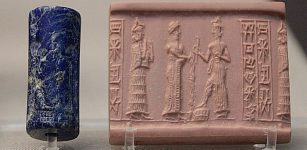 Shamash: Mesopotamian God Of Sun, Truth, Justice And Healing
Featured Stories | Jan 11, 2016
Shamash: Mesopotamian God Of Sun, Truth, Justice And Healing
Featured Stories | Jan 11, 2016 -
 Evidence Reveals Ancient Saudi Arabia Had A Complex, Thriving Society, Contradicting Notions Of A Struggling Population In Barren Lands
Featured Stories | Aug 21, 2024
Evidence Reveals Ancient Saudi Arabia Had A Complex, Thriving Society, Contradicting Notions Of A Struggling Population In Barren Lands
Featured Stories | Aug 21, 2024 -
 Prehistoric Humans Adapted To Intense Climate Change – New Study
Archaeology | Apr 22, 2022
Prehistoric Humans Adapted To Intense Climate Change – New Study
Archaeology | Apr 22, 2022 -
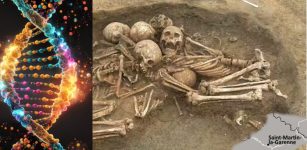 A 4,500-Year-Old Collective Tomb In France Reveals Its Secret – The Final Stage In The Formation Of The ‘European Genome’
Featured Stories | Jul 5, 2024
A 4,500-Year-Old Collective Tomb In France Reveals Its Secret – The Final Stage In The Formation Of The ‘European Genome’
Featured Stories | Jul 5, 2024 -
 Disappearance Of Neanderthals: Were Inbreeding And Demographic Shifts Responsible?
Archaeology | Nov 28, 2019
Disappearance Of Neanderthals: Were Inbreeding And Demographic Shifts Responsible?
Archaeology | Nov 28, 2019 -
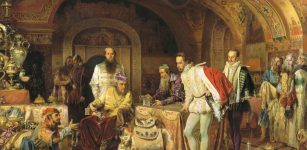 Ivan The Terrible: Military Arsenal Unearthed Near Moscow
Archaeology | Jan 2, 2016
Ivan The Terrible: Military Arsenal Unearthed Near Moscow
Archaeology | Jan 2, 2016 -
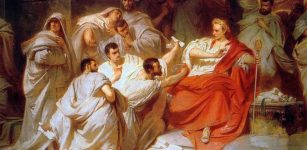 On This Day In History: Julius Caesar Assassinated – On Mar 15, 44 BC
News | Mar 15, 2017
On This Day In History: Julius Caesar Assassinated – On Mar 15, 44 BC
News | Mar 15, 2017 -
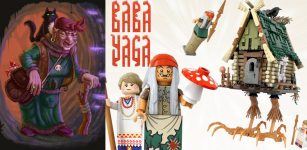 Baba Yaga Lego Created By Russian Artist Brings Classic Slavic Mythological Figures To Life
Myths & Legends | Feb 23, 2021
Baba Yaga Lego Created By Russian Artist Brings Classic Slavic Mythological Figures To Life
Myths & Legends | Feb 23, 2021 -
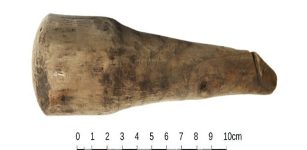 Unique Roman Artifact Discovered At Vindolanda Was More Than A Good Luck Charm
Archaeology | Feb 20, 2023
Unique Roman Artifact Discovered At Vindolanda Was More Than A Good Luck Charm
Archaeology | Feb 20, 2023

